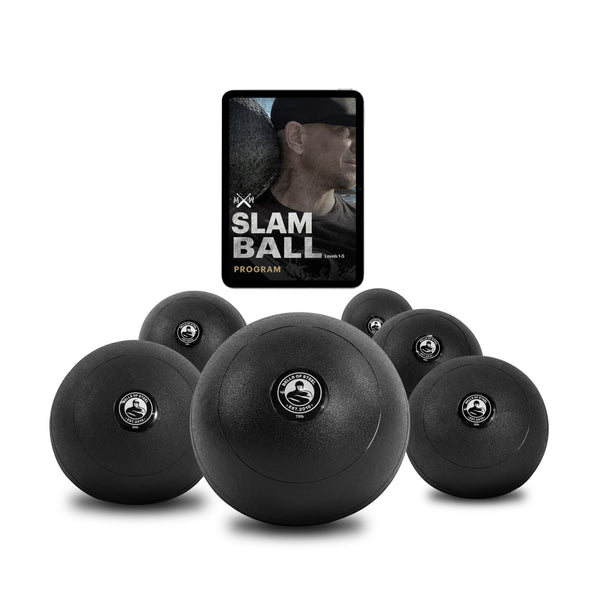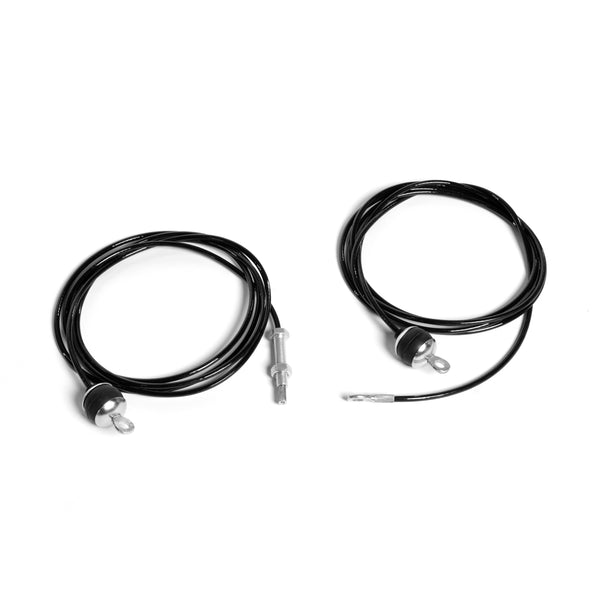Hockey training isn’t just about the hours spent on the ice. Off-ice, or dry-land training, is just as essential, targeting the strength, explosiveness, and conditioning that give hockey players the edge when they lace up their skates.
For athletes who crave an intense, functional workout that translates directly to game performance, kettlebells are an ideal training tool. Let’s break down why kettlebells should be a staple in any hockey player’s routine, with exercises to power up your performance.
Why Dry-Land Training and Cross Training Matter for Hockey Players
Dry-land training prepares the body for the specific demands of hockey. It’s not just about strength; it's about explosive power, agility, and the ability to endure shifts on the ice. Cross training helps hockey players develop these abilities while reducing the risk of repetitive strain injuries common to single-sport athletes.
Using kettlebells adds variety to training, recruits multiple muscle groups, and challenges your stability—all crucial elements for players looking to level up.
8 Reasons Why Kettlebells Are Great for Hockey Players
1. Improve Explosive Power and Speed
Hockey is a game of explosive sprints and quick changes in direction, and kettlebells excel in building this power. Movements like the kettlebell swing train the hip hinge pattern, which directly translates to the explosive push-offs required in skating. The swing emphasizes hip extension and power, two key components for accelerating down the ice.
2. Build Functional Strength for Skating Stability
Kettlebells are unique in that they require stabilization of the entire body, which mimics the stabilization needed on the ice. Exercises like the kettlebell goblet squat and single-leg deadlift strengthen the legs, core, and stabilizer muscles, enhancing balance and stability—especially in those tricky lateral moves and edges.
3. Enhance Core Strength and Endurance
A strong core is the secret weapon for any hockey player; it’s what keeps you stable during checks, helps you power through shots, and maintains balance while weaving through the defense. Kettlebells are fantastic for building core strength, especially with moves like the Turkish get-up, kettlebell windmills, and front-loaded carries. These exercises challenge your balance and build core endurance, which can help you stay strong through all three periods.
4. Boost Grip Strength
Hockey players need a strong grip for stick handling and shooting, and kettlebells are great for building it. The unique shape of kettlebells forces your forearms and hands to work harder to stabilize the weight. Moves like kettlebell swings and snatches improve grip strength, helping players control the puck better and fire off harder shots.
5. Improve Cardiovascular Conditioning Without Traditional Cardio
Hockey is all about short, intense bursts of energy, and kettlebell circuits are excellent for this type of conditioning. Kettlebell complexes, where you combine exercises like swings, cleans, and goblet squats, push your cardiovascular system hard while keeping things dynamic and interesting. This builds endurance without relying on lengthy, traditional cardio sessions, so you stay conditioned without burning out your legs.
6. Develop Better Coordination and Body Awareness
Kettlebell exercises often involve multiple planes of movement, which improves body awareness—a crucial skill on the ice. Movements like kettlebell windmills and Turkish get-ups require stability, balance, and coordination, which help players move more fluidly. Improved coordination helps hockey players be more agile and responsive to fast-paced situations in the rink.
7. Train Unilaterally for Balanced Strength
Hockey players are often stronger on one side due to repeated skating patterns. Kettlebells allow for unilateral (single-sided) training, which helps balance out muscle imbalances. Exercises like single-arm presses, single-leg deadlifts, and suitcase carries strengthen each side independently, reducing injury risk and enhancing overall body symmetry.
8. Increase Mobility for a More Resilient Body
Flexibility and mobility are often overlooked in hockey but are critical for injury prevention. Kettlebell exercises, particularly those that focus on full range of motion (like windmills and overhead carries), encourage better mobility in the shoulders, hips, and thoracic spine. Greater mobility makes it easier to get low during a shot, keep a wide stance, and withstand the physical demands of a game.
7 Effective Kettlebell Exercises for Hockey Players
Now that we’ve covered the benefits, here are some specific kettlebell exercises to incorporate into hockey training. Each targets a specific skill or muscle group that’s essential for on-ice performance.
1. Kettlebell Swing
This explosive move targets the hips, glutes, and hamstrings, building the power needed for sprinting down the ice. Start with a basic two-handed swing, then progress to single-arm swings for added shoulder stability and grip strength.
2. Goblet Squat
The goblet squat builds leg and core strength while reinforcing proper squat mechanics. Holding a kettlebell in front forces you to keep your chest up and engage your core, which improves stability and posture—both critical on the ice.
3. Turkish Get-Up
This full-body exercise is a fantastic mobility builder that enhances body awareness and stability. Each step requires control and coordination, which helps hockey players maintain balance and resist checks.
4. Single-Leg Deadlift
Balance and stability in each leg are vital for hockey players. The single-leg deadlift with a kettlebell strengthens the posterior chain, improves balance, and develops hip stability for those fast lateral moves.
5. Kettlebell Clean and Press
The clean and press builds full-body strength, from explosive hip power to shoulder stability. It’s perfect for building both upper and lower body coordination and is a powerful addition to a hockey player’s arsenal for improving overall athleticism.
6. Windmill
Kettlebell windmills improve core stability, shoulder mobility, and hip flexibility. As a bonus, they also challenge the obliques, which are important for rotational power and stability during shots.
7. Overhead Carry
The overhead carry is fantastic for core stability and shoulder endurance. Simply hold a kettlebell overhead with a locked-out arm, engage your core, and walk. This movement reinforces shoulder stability and improves posture, which are essential for on-ice resilience.
FAQs on Kettlebell Training for Hockey
Q: How often should hockey players use kettlebells?
A: For off-ice training, 2-3 kettlebell sessions per week is a good balance. Focus on compound movements that target multiple muscle groups and prioritize exercises that translate well to hockey movements.
Q: Can kettlebells replace traditional weightlifting for hockey players?
A: Kettlebells are incredibly versatile but are best used to supplement, not replace, traditional weightlifting. Combining kettlebells with barbell and bodyweight exercises creates a well-rounded program for hockey.
Q: What kettlebell should I start with?
A: Start with a weight that allows you to perform exercises with good form. Typically, 8-12 kg is a good starting range for men, and 6-8 kg for women. As strength and form improve, increase the weight gradually.
Conclusion: Level Up Your Hockey Training with Kettlebells
Kettlebells offer hockey players a unique training tool that builds strength, endurance, and mobility in a way few other tools can. From enhancing core stability to developing explosive power, kettlebells are the perfect cross-training companion for those looking to dominate on the ice. Add them to your dry-land training, stay consistent, and prepare to watch your performance take flight. Now go out there and train like the champ you are!



